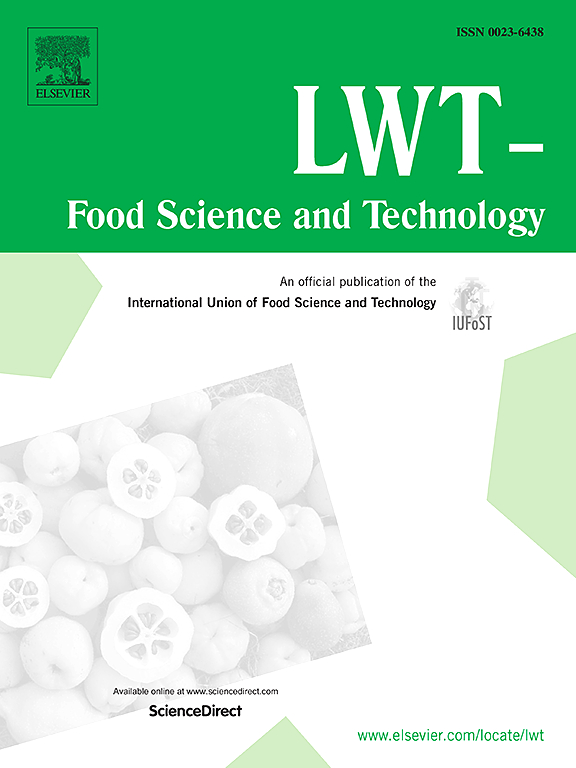Physico-chemical properties of apple and berry vinegars
IF 6
1区 农林科学
Q1 FOOD SCIENCE & TECHNOLOGY
引用次数: 0
Abstract
Today's market offers a wide array of specialty vinegars, particularly berry vinegars. The aim of this study was to investigate the physicochemical properties of commercially available berry vinegars from Latvia and Estonia, including four distinct apple cider vinegars from Italy, Germany, and Latvia. Samples include vinegars derived from black currant, red currant, Japanese quince, gooseberry, nettle, and tomato. Significant differences were observed in total phenolic content (TPC), individual phenolic compounds, organic acids, and antioxidant potential. The highest TPC was detected in Japanese quince vinegar (355.6 ± 9.3 mg GAE 100 mL−1) and black currant vinegar (243.3 ± 5.7 mg GAE 100 mL−1), which also demonstrated the strongest antiradical activity (16.63 ± 0.02 and 16.38 ± 0.04 mg TE 100 mL−1, respectively). Among individual compounds, 3,5-dihydroxybenzoic acid and chlorogenic acid were the most abundant phenolics, while acetic, citric, and malic acids dominated the organic acid profiles. Japanese quince vinegar was notably rich in malic and quinic acids, and black currant vinegar had the highest ascorbic acid content (104.17 ± 0.02 mg 100 mL−1). These findings suggest that berry-based vinegars, especially those from Japanese quince and black currant, may serve as valuable functional food ingredients due to their superior antioxidant and bioactive profiles.
苹果和浆果醋的理化性质
今天的市场提供了各种各样的特色醋,尤其是浆果醋。本研究的目的是调查拉脱维亚和爱沙尼亚市售浆果醋的物理化学特性,包括来自意大利、德国和拉脱维亚的四种不同的苹果醋。样品包括从黑加仑子、红加仑子、日本榅桲、醋栗、荨麻和番茄中提取的醋。在总酚含量(TPC)、单个酚类化合物、有机酸和抗氧化潜力方面存在显著差异。其中,日本榅桲醋(355.6±9.3 mg GAE 100 mL−1)和黑加仑醋(243.3±5.7 mg GAE 100 mL−1)的TPC含量最高,抗自由基活性最强(分别为16.63±0.02和16.38±0.04 mg TE 100 mL−1)。在单个化合物中,3,5-二羟基苯甲酸和绿原酸是最丰富的酚类化合物,乙酸、柠檬酸和苹果酸是主要的有机酸谱。黑醋栗醋的抗坏血酸含量最高(104.17±0.02 mg 100 mL−1),其中苹果酸和奎宁酸含量最高。这些发现表明,浆果醋,特别是来自日本榅桲和黑加仑的醋,可能由于其优越的抗氧化和生物活性特征而成为有价值的功能性食品成分。
本文章由计算机程序翻译,如有差异,请以英文原文为准。
求助全文
约1分钟内获得全文
求助全文
来源期刊

LWT - Food Science and Technology
工程技术-食品科技
CiteScore
11.80
自引率
6.70%
发文量
1724
审稿时长
65 days
期刊介绍:
LWT - Food Science and Technology is an international journal that publishes innovative papers in the fields of food chemistry, biochemistry, microbiology, technology and nutrition. The work described should be innovative either in the approach or in the methods used. The significance of the results either for the science community or for the food industry must also be specified. Contributions written in English are welcomed in the form of review articles, short reviews, research papers, and research notes. Papers featuring animal trials and cell cultures are outside the scope of the journal and will not be considered for publication.
 求助内容:
求助内容: 应助结果提醒方式:
应助结果提醒方式:


